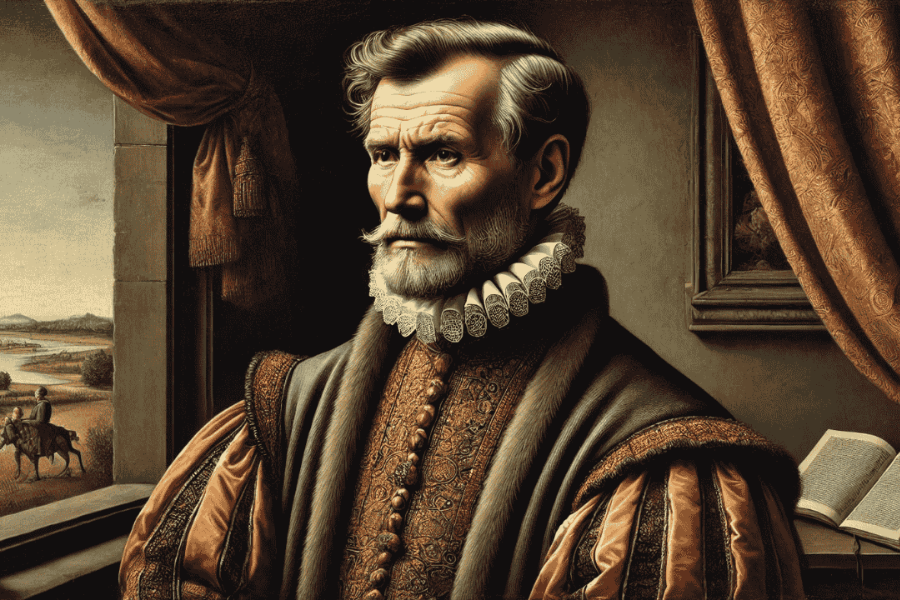The Timeless Significance of the 1555 Portrait Servais
The “1555 Portrait Servais” is a notable artwork from the Renaissance period, celebrated for its exceptional realism and historical value. As one of the era’s lasting masterpieces, it provides a fascinating glimpse into 16th-century artistic techniques, social values, and symbolism. This article delves into the portrait’s historical background, artistic elements, and its lasting influence on art history.
Uncovering the Artist Behind the Portrait
Though the creator of the “1555 Portrait Servais” remains unknown, the piece is commonly linked to the Flemish Renaissance tradition. Hallmarks of this period’s art style—realism, meticulous detail, and an intense focus on capturing individuality—are vividly present. These traits, reminiscent of artists like Hans Holbein the Younger and Anthony van Dyck, suggest a highly skilled artist deeply rooted in the Flemish artistic tradition.
The Flemish Renaissance and Its Influence
Flemish art of the Renaissance era is renowned for its detailed portrayal of human subjects, often rendered with a delicate, lifelike quality. Using oil paints, Flemish artists achieved subtle textures that heightened realism in their portraits. This work reflects the Flemish Renaissance’s commitment to capturing personality and status, aligning it with the finest traditions of 16th-century portraiture.
Analyzing the Portrait of Servais
The subject, presumed to be an influential figure of his time, is portrayed with dignified composure. His attire and facial expression convey a clear sense of authority and status. The portrait’s nuanced approach to character representation, from clothing to posture, reveals clues about his societal role and personality.
Distinctive Features of the Artwork
- Attire: The dark, luxurious fabrics imply that Servais was a figure of wealth and importance, typical of elite individuals in the 1500s.
- Expression: Servais’ composed expression hints at a strong, authoritative nature.
- Posture: His formal, poised stance emphasizes his societal prominence and dignified presence.
| Feature | Description |
| Attire | Dark, rich fabrics signifying affluence |
| Expression | Calm and confident, suggesting leadership |
| Posture | Formal stance, highlighting social importance |
Symbolic Layers Within the Portrait
Renaissance portraits often embedded symbols that reflected the subject’s identity or role. The “1555 Portrait Servais” is no exception. The subject’s attire and the simplicity of the background highlight his status, focusing attention squarely on his presence.
- Symbol of Wealth: The luxurious clothing and formal pose convey his social stature.
- Minimalist Background: By keeping the background simple, the artist ensures Servais remains the focal point, emphasizing his importance.
Historical Context of the Renaissance Era
In 1555, Europe was experiencing significant political and religious shifts. Portraits commissioned during this time often represented more than personal likeness; they were a means to immortalize status and legacy. Such portraits were prominently displayed, asserting the subject’s influence in society.
The Role of Portraiture in the 16th Century
Portraiture in this period was more than a visual record. For many, it was a symbol of their social identity, authority, and enduring legacy. The “1555 Portrait Servais” exemplifies this cultural practice, portraying Servais in a way that enhances his stature and societal role.
The Portrait’s Influence on Art History
This portrait remains an invaluable source for understanding Renaissance portraiture. Art historians examine its methods and symbolism to gain insights into both the techniques and cultural norms of the time. It stands as a distinguished example of Flemish Renaissance art, showcasing the period’s emphasis on realism and intricate detail.
Legacy and Impact on Future Artists
The unknown artist’s meticulous techniques—especially the attention to lifelike detail and texture—paved the way for future generations. The approach to realism seen here would influence artists for centuries, solidifying the portrait’s role in shaping Western art.
Conclusion
The “1555 Portrait Servais” serves as both a tribute to the subject it immortalizes and a window into Renaissance Europe. Its detailed composition, rich in symbolism, offers a lasting glimpse into the values and aesthetic preferences of the 16th century. Today, it remains an essential reference point for scholars and art enthusiasts alike, contributing to our understanding of Flemish Renaissance art and the broader history of portraiture.
Explore exhilarating adventures and experiences at discoverthrill







